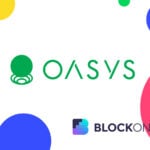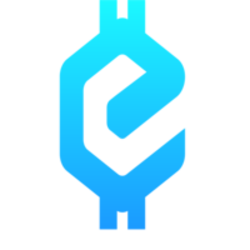Global gaming is a huge industry worth hundreds of billions in revenue every year. Oasys have created a Web3 development environment for games. With more people looking for real ownership of Web3 assets, Oasys is well placed to thrive in the growing metaverse development space.
Gaming is changing, and the Web3 revolution will impact every aspect of how people view digital assets. Gamers won’t be satisfied with a zero-ownership environment, as both blockchain and NFTs offer ownership at a new level.
Oasys is a decentralized blockchain gaming platform that embodies the goals of Web3. It puts ownership in the hands of its players and devs. Once the metaverse ecosystem is up and running, it will become a DAO, and leave future development to the community. It could become the next standard for global gaming development.
Unlike many Web3 gaming platforms, Oasys uses a multi-token model. The platform is purpose-built for gaming, and allows devs maximum flexibility when it comes to how to best monetize their products. Oasys has a revolutionary approach to blockchain gaming, and will make more news in 2024.
Oasys is Well Funded and Ready to Grow
Oasys recently raised $20 million USD in working capital, which is plan to spend over the next 6 years. The funding round lead was Republic Capital, and Jump Crypto, Gate.io, Bitbank Crypto.com, Huobi, Kucoin, and Mirana Ventures participated.
Daiki Moriyama, director at Oasys, told the media that the private token sale, “doesn’t dilute the equity of our project that we firmly believe in…(and)…allows us to reach a broader base of backers than a traditional equity fundraiser will.”
In addition to being well funded, Oasys is also cementing partnerships with other leading companies. It recently announced a partnership with GroundX, the South Korean blockchain gaming giant owned by Kakao. It also plans a tie-up with the popular messaging app KakaoTalk via Klip Wallet SDK.
Innovation for Multiverse Gaming
Oasys is already offering powerful tools to the global Web3 gaming community. It recently introduced a wallet app, called Oasys Passport. With its focus on a multi-token model, ownership over digital assets is a key component of the Oasys development space.
Oasys passport will help people everywhere enter the Web3 gaming arena, and get the most out of their tokens. The wallet is designed to be simple to operate, and will be managed by Oasys Wallet Inc.
The Oasys team commented that the app will make it simple for more people to enter the blockchain gaming space. Instead of dealing with a blockchain wallet that isn’t gaming-native, now everyone has a free option that was made specifically for gamers. It will also have features that are built specifically for Oasys products, and will offer value added to both gamers and devs,
With the user experience in mind, Oasys focused on making it simple to get into Web3 gaming with the new Oasys Passport. Users can create a new wallet with a one-click process, and the registration skips email verification, or creating a password. It also offers a fully automated chain selection process, giving players an added level of simplicity when using multiple blockchains.
The company plans to continue development on Oasys Passport wallet, and add even more features for users in the coming months. It will also develop NFT specific tools that will allow great visualizations for gaming assets, and a bridge mode for easy asset swaps.
The Tech Side of Oasys and Tokenomics
The backbone of Oasys is an EVM-compatible, proof-of-stake public blockchain that was made for gaming devs. It addresses current Web3 gaming development issues, and offers both players and devs a brighter future. With a two-layer design, Oasys is purpose-built for gamers.
Layer 1 is the Hub Layer, which ensures network stability, unlimited scalability, and 24/7 data availability. Layer 2 is the Verse Layer, which is the developer layer for dApps. With these two layers working together, gaming devs have a new way to create dApps, and build-out the next generation in Web3 gaming.
Layer 1: Hub Layer
The Hub Layer is the base of the Oasys blockchain. Like Ethereum, it has a block time of 15 seconds. It can connect to thousands of Verse Layers and maintain stability. With special tools that restrict traffic to the Verse Layer, it can remain stable even when traffic is heavy. It uses optimistic rollups to minimize the number of transactions on the Hub Layer, so it has a level of scalability other blockchains can’t offer.
Layer 2: Verse Layer
Oasys built the Verse Layer with L2 technology – not as a private sidechain. With this architecture, it offers better data availability, scalability, and transaction speeds. With the use of optimistic rollups, the Hub Layer will track all the data on the Verse Layer, creating a high level of network resilience.
The Tokenomics
Oasys uses a multi-token economy that is based on its native token – OAS. The OAS token is the foundation of the platform, and is the highest level token on the blockchain. The platform also uses the Verse Token, which is the primary token for the Verse Layer, as well as the Game Token and Dapps Token. These two tokens are the primary tokens for games and Dapps, respectively.
At its launch, the Oasys blockchain will have 10 billion OAS tokens, but as it transitions to a DAO, the community will be able to set a new amount as it sees necessary for the ecosystem.
A multi-token structure opens up possibilities for game devs. Verse Builders and Game Developers can create freely, and not worry about making all the metaverses supported on the platform operate in unison.
Oasys is preparing for a development space where some metaverses will be stand-alone universes, while others may connect. This allows unique types of Verses to be created while multiple genres of games are deployed in the Oasys ecosystem.
When designing a Verse, a developer could make it permissionless, and open to numerous dApps. A Verse could also limit the kind of IP used, and create a closed metaverse with limited uses. The structure Oasys created gives devs a huge amount of control over how they design a Verse, and how games and dApps are used (or not used) in the ecosystem.
With this structure, game devs can create unique token structures for every Verse, which allows them to incentivize different games in many ways. For example, a vintage-style side scroller could give token rewards for finishing a level in a short amount of time, while a MMORPG could reward players with in-game tokens for completing a quest.
A Huge Market for Oasys
The WEF expects the global gaming economy to exceed $300 billion USD by 2026. With such a massive market, platforms like the Oasys blockchain are set to grow into a massive global marketplace. People will demand more control over their digital assets, and the Web3 revolution will create the tools the global gaming population needs.
Oasys is thinking about the next generation of gaming development, and creating systems that will empower gaming developers in the Web3 gaming space. With a rock-solid blockchain and great tools, Oasys is primed to be one of the biggest names in metaverse gaming over the coming decade. Web3 gaming is here, and it will only grow more attractive!














